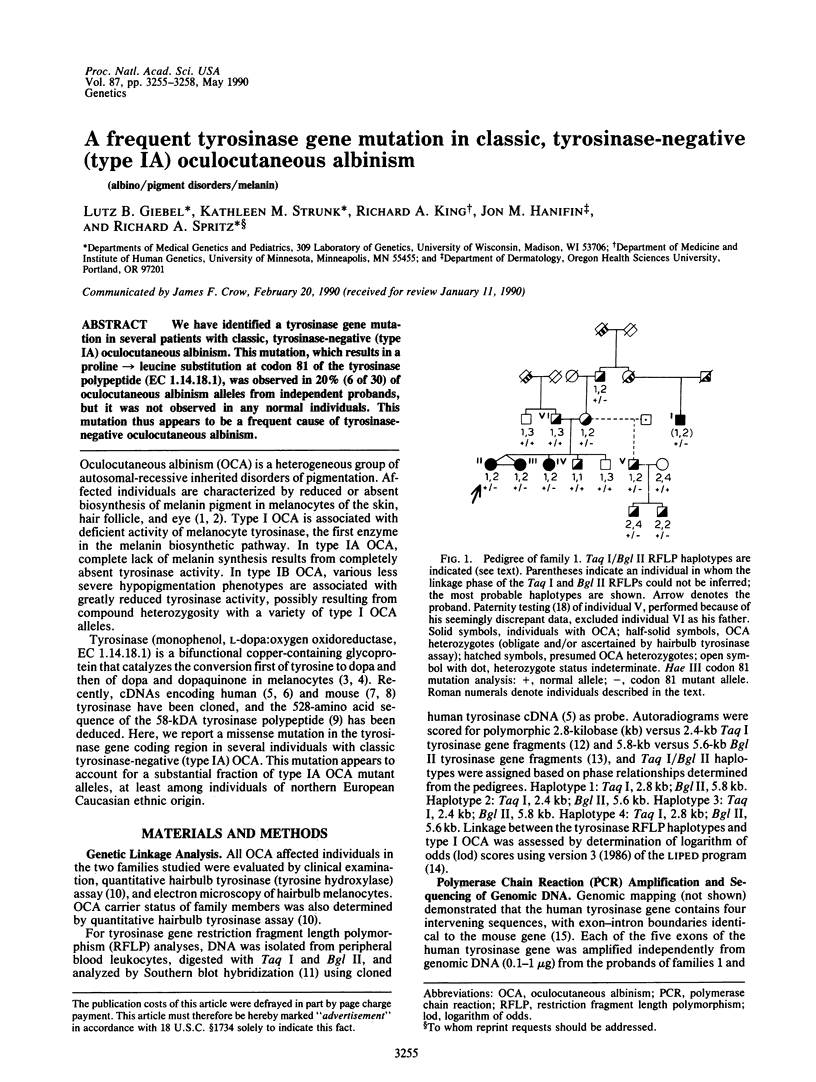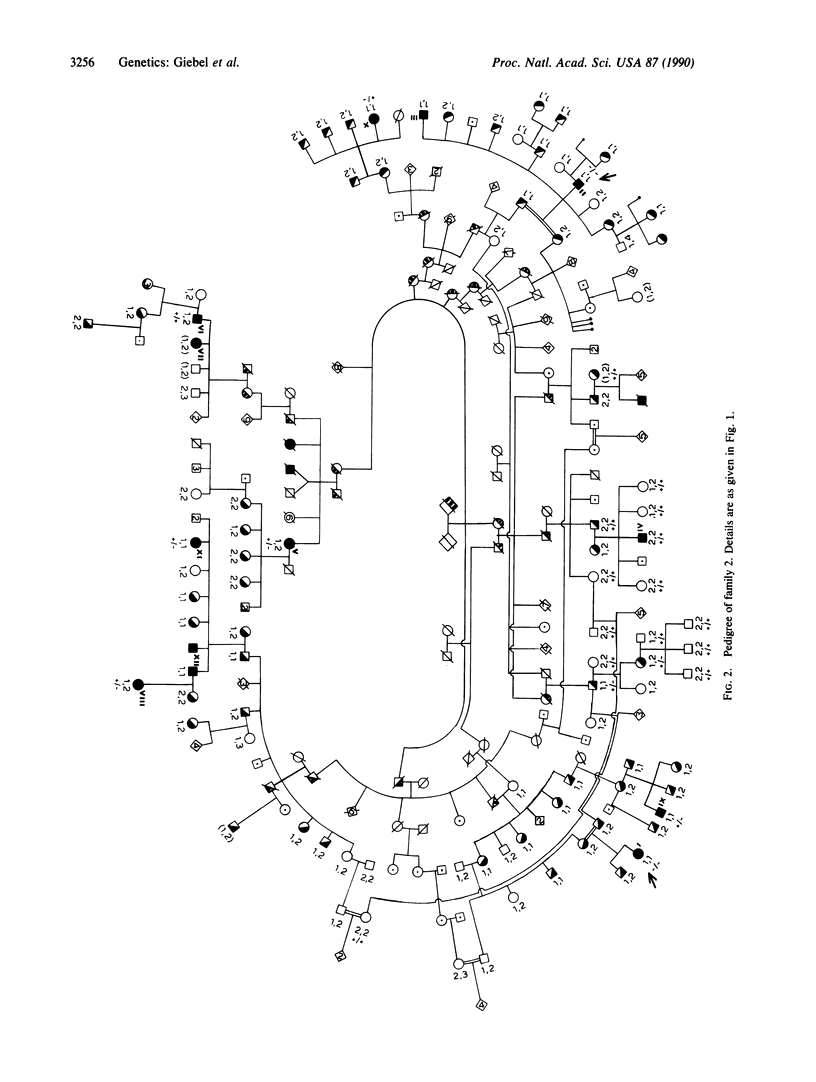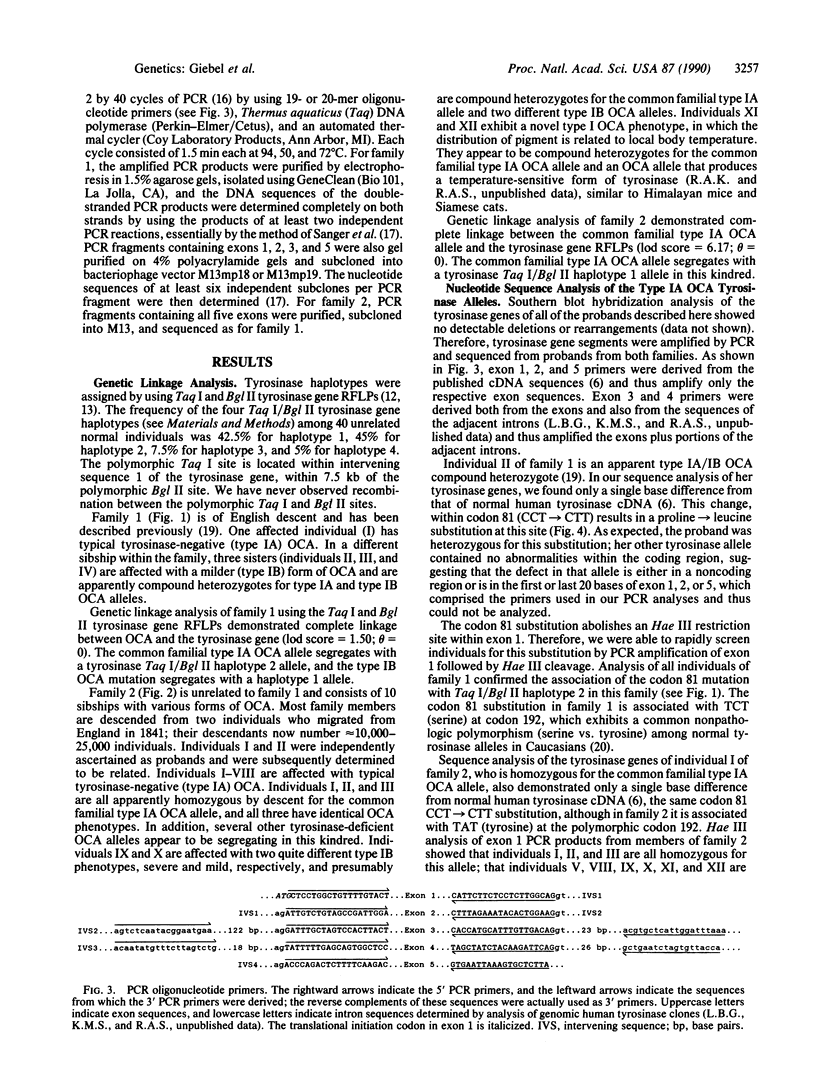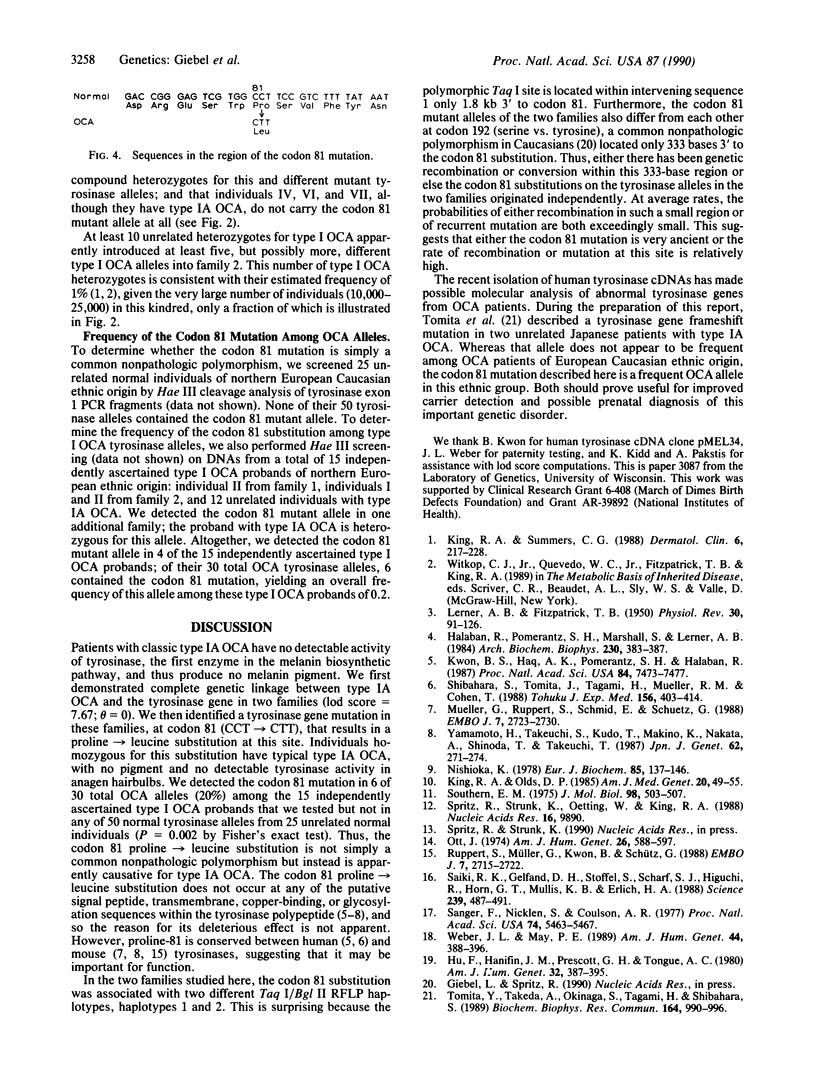Abstract
We have identified a tyrosinase gene mutation in several patients with classic, tyrosinase-negative (type IA) oculocutaneous albinism. This mutation, which results in a proline----leucine substitution at codon 81 of the tyrosinase polypeptide (EC 1.14.18.1), was observed in 20% (6 of 30) of oculocutaneous albinism alleles from independent probands, but it was not observed in any normal individuals. This mutation thus appears to be a frequent cause of tyrosinase-negative oculocutaneous albinism.
Full text
PDF



Selected References
These references are in PubMed. This may not be the complete list of references from this article.
- Halaban R., Pomerantz S. H., Marshall S., Lerner A. B. Tyrosinase activity and abundance in Cloudman melanoma cells. Arch Biochem Biophys. 1984 Apr;230(1):383–387. doi: 10.1016/0003-9861(84)90121-8. [DOI] [PubMed] [Google Scholar]
- Hu F., Hanifin J. M., Prescott G. H., Tongue A. C. Yellow mutant albinism: cytochemical, ultrastructural, and genetic characterization suggesting multiple allelism. Am J Hum Genet. 1980 May;32(3):387–395. [PMC free article] [PubMed] [Google Scholar]
- King R. A., Olds D. P. Hairbulb tyrosinase activity in oculocutaneous albinism: suggestions for pathway control and block location. Am J Med Genet. 1985 Jan;20(1):49–55. doi: 10.1002/ajmg.1320200108. [DOI] [PubMed] [Google Scholar]
- King R. A., Summers C. G. Albinism. Dermatol Clin. 1988 Apr;6(2):217–228. [PubMed] [Google Scholar]
- Kwon B. S., Haq A. K., Pomerantz S. H., Halaban R. Isolation and sequence of a cDNA clone for human tyrosinase that maps at the mouse c-albino locus. Proc Natl Acad Sci U S A. 1987 Nov;84(21):7473–7477. doi: 10.1073/pnas.84.21.7473. [DOI] [PMC free article] [PubMed] [Google Scholar]
- LERNER A. B., FITZPATRICK T. B. Biochemistry of melanin formation. Physiol Rev. 1950 Jan;30(1):91–126. doi: 10.1152/physrev.1950.30.1.91. [DOI] [PubMed] [Google Scholar]
- Müller G., Ruppert S., Schmid E., Schütz G. Functional analysis of alternatively spliced tyrosinase gene transcripts. EMBO J. 1988 Sep;7(9):2723–2730. doi: 10.1002/j.1460-2075.1988.tb03126.x. [DOI] [PMC free article] [PubMed] [Google Scholar]
- Nishioka K. Particulate tyrosinase of human malignant melanoma. Solubilization, purification following trypsin treatment, and characterization. Eur J Biochem. 1978 Apr;85(1):137–146. doi: 10.1111/j.1432-1033.1978.tb12221.x. [DOI] [PubMed] [Google Scholar]
- Ott J. Estimation of the recombination fraction in human pedigrees: efficient computation of the likelihood for human linkage studies. Am J Hum Genet. 1974 Sep;26(5):588–597. [PMC free article] [PubMed] [Google Scholar]
- Ruppert S., Müller G., Kwon B., Schütz G. Multiple transcripts of the mouse tyrosinase gene are generated by alternative splicing. EMBO J. 1988 Sep;7(9):2715–2722. doi: 10.1002/j.1460-2075.1988.tb03125.x. [DOI] [PMC free article] [PubMed] [Google Scholar]
- Saiki R. K., Gelfand D. H., Stoffel S., Scharf S. J., Higuchi R., Horn G. T., Mullis K. B., Erlich H. A. Primer-directed enzymatic amplification of DNA with a thermostable DNA polymerase. Science. 1988 Jan 29;239(4839):487–491. doi: 10.1126/science.2448875. [DOI] [PubMed] [Google Scholar]
- Sanger F., Nicklen S., Coulson A. R. DNA sequencing with chain-terminating inhibitors. Proc Natl Acad Sci U S A. 1977 Dec;74(12):5463–5467. doi: 10.1073/pnas.74.12.5463. [DOI] [PMC free article] [PubMed] [Google Scholar]
- Shibahara S., Tomita Y., Tagami H., Müller R. M., Cohen T. Molecular basis for the heterogeneity of human tyrosinase. Tohoku J Exp Med. 1988 Dec;156(4):403–414. doi: 10.1620/tjem.156.403. [DOI] [PubMed] [Google Scholar]
- Southern E. M. Detection of specific sequences among DNA fragments separated by gel electrophoresis. J Mol Biol. 1975 Nov 5;98(3):503–517. doi: 10.1016/s0022-2836(75)80083-0. [DOI] [PubMed] [Google Scholar]
- Spritz R., Strunk K., Oetting W., King R. RFLP for TaqI at the human tyrosinase locus. Nucleic Acids Res. 1988 Oct 25;16(20):9890–9890. doi: 10.1093/nar/16.20.9890. [DOI] [PMC free article] [PubMed] [Google Scholar]
- Tomita Y., Takeda A., Okinaga S., Tagami H., Shibahara S. Human oculocutaneous albinism caused by single base insertion in the tyrosinase gene. Biochem Biophys Res Commun. 1989 Nov 15;164(3):990–996. doi: 10.1016/0006-291x(89)91767-1. [DOI] [PubMed] [Google Scholar]


